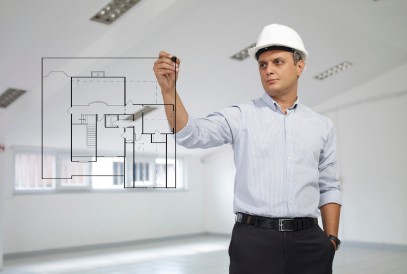Estimated, preventive and final metric calculation: what is it, who does it and what is it for?
Let's start by saying that the
bill of quantities represents a fundamental document in the construction and design sector. This is a detailed list that lists all the work that needs to be done and the materials needed to complete a building or construction project.
This list is usually drawn up by a professional, such as a surveyor or an architect, and precisely sets out the quantities, measurements and technical specifications for each component involved in the project, ranging from construction materials to
hardware, from the finishes used for the work on
electric material, and so on.
The main purpose of the bill of quantities is to
accurately calculate the overall costs of the project . This document is vital for builders, clients, contractors and all other professionals involved, as it provides a clear basis for drawing up estimates and controlling the available budget.
Furthermore, the bill of quantities helps to
prevent errors and ambiguities in the planning and implementation of the works, ensuring that the different parties who are involved have a clear understanding of what is required to successfully complete the work.

The importance of the metric calculation in construction projects
If you're planning a building or construction project, you've probably heard of the "
bill of quantities ." But what does it represent and why is it so important? In this article, we will explore the importance of bill of quantities in construction projects and how it can be a valuable tool in ensuring the success of your project. Read on to learn more!
Metric calculation meaning and definition
As we have already seen from the first lines of this article, the bill of quantities is used to
evaluate the operations and resources necessary in order to determine the costs of a specific project. This responsibility is entrusted to a professional expert in the field and is undoubtedly of great value also for clients, as it allows them to have a clear perspective on the costs they will have to face.
We remind you that the Decree of the Ministry of Economic Development (
MiSE) dated 6 August 2020 had introduced a series of requirements for interventions that accessed the famous
Superbonus, a tax incentive for the energy requalification of buildings. Among these requirements, there was a verification of the adequacy of the costs by the technicians responsible for certifying compliance with the requirements required to obtain the benefit.
The metric calculation therefore plays an important role in ensuring correctness and transparency in the use of the
window bonus.
Bill of quantities: what are the different types of bill of quantities?
At this point it becomes important to underline a clear distinction between the different types of metric calculations, which represent distinct aspects in the management of construction projects.
The metric calculation is a detailed list of the processes and quantities necessary for the realization of a building project. This document focuses on the quantification of activities and materials, but does not include economic evaluation, i.e. it does not provide the costs associated with each item.
On the other hand, the bill of quantities is a document which, in addition to listing the processes and the related quantities, also includes the economic evaluation of these processes. This means that each item in the bill of quantities is associated with a unit price, which is multiplied by the quantity to obtain the total amount. The sum of all these amounts represents the total cost of the works.
The final metric calculation represents the calculation that is carried out once the building work has been completed. Unlike the estimated metric calculation , which is associated with the initial phase of the works and the executive project, the final metric calculation follows the conclusion of the works.
This type of calculation is based on the actual work and quantities actually carried out, allowing a direct comparison with the estimated metric calculation that was drawn up before the start of the works.
In short, the bill of quantities is a quantification of the activities, while the bill of quantities adds the economic aspect, providing a detailed estimate of the project costs. Both are crucial in managing construction projects, with the latter following the former to complete the financial vision of the project.
Usually, unless we specify otherwise, in this article we always refer to the bill of quantities.
Who takes care of the metric calculation in construction?
As anticipated, the preparation of the metric calculation is generally entrusted to
qualified professionals such as surveyors, architects or construction engineers.
These experts have the expertise to accurately estimate the quantities and technical details required for each aspect of the project. Their knowledge is essential to ensure that the metric calculation is accurate and complete.
Often, the designated professional is part of the design or project management team. Furthermore, situations that require complex calculations may require the involvement of different professional figures. In fact, to obtain an accurate and complete metric calculation, several activities are required, including design and planning, technical evaluations and structural calculations, surveys and measurements on the ground and the selection of appropriate finishes and materials.
Furthermore, once the calculation has been drawn up, the Works Manager is responsible for supervising the execution of the works, recording and communicating any necessary changes. In fact
, the calculation may require updates during the implementation phase due to substantial or less substantial changes.
What is the estimated metric calculation for?
The importance of the bill of quantities becomes evident when you consider its main purpose: to quantify and estimate the total costs of the project. This tool is crucial for several reasons:
- More accurate estimates : The bill of quantities provides a solid basis for preparing cost estimates. Contractors and suppliers can use it to accurately calculate the costs of necessary materials and labor;
- Budget control: Once the project begins, the bill of quantities serves as a reference point for budget control. Helps avoid financial surprises and ensure the project stays within expected limits;
- Avoid errors and ambiguities : the detail of the bill of quantities helps to prevent errors and ambiguities in the planning and execution of the works. All parties involved in the project can refer to the metric calculation to understand exactly what is required of them;
- Guidance for clients : Clients benefit from the bill of quantities as it gives them a clear perspective on the costs they will face. This helps them plan their budget more efficiently.
What does a bill of quantities include?
We have seen how the bill of quantities is essentially a detailed list of all the works and materials necessary to complete a building project in accordance with the initial design. This document
therefore includes a series of items , each of which represents a specific part of the project.
For each item, the quantities and associated costs are specified . Additionally, it is essential to determine the appropriate unit of measurement, which will vary based on the nature of the item itself.
The bill of quantities can include all phases of the construction process, providing a total cost of the entire project. This means that it not only includes preliminary works, such as demolition or excavation, but also finishing works and accessories, such as the selection of floors, coverings,
windows and doors. Structural works and systems are not excluded, but quantified in detail. In practice, everything that is made, installed or performed to achieve the final result is detailed and evaluated both in terms of size and cost.
Furthermore, the metric calculation provides additional information on the specifications of the materials used, the technical requirements and the reference standards. Thanks to a carefully developed metric calculation, it becomes easier to monitor costs during the evolution of the project, ensuring that they are aligned with what was initially planned.
What are the differences between metric calculations and specifications?
The bill of quantities and the tender specifications are two distinct documents used in the design and execution of a contracted work. The main differences between the two include:
Aim of the document:
- Bill of quantities : the bill of quantities focuses on the quantification of works and materials, in order to calculate the unit, partial and total costs of the entire project;
- Specifications : The specifications, on the other hand, are not concerned with quantification, but provide a detailed description of what needs to be achieved and the technical specifications of the materials to be used;
Mandatory:
- Bill of quantities : the bill of quantities is essential for calculating costs and estimates, but its preparation is not mandatory by law;
- Specifications : in the case of public works, the specifications are mandatory to define the requirements and specifications that must be respected by each element and process in the work. It can also be used in private projects to outline clear decisions and technical aspects.
Content:
- Bill of quantities : contains a detailed list of all quantities of work and materials needed, along with associated costs;
- Specifications : provides a narrative description of the technical specifications, characteristics and qualities required for the different parts of the work.
In summary, the metric calculation focuses on quantification and costs, while the specifications focus on the technical specifications and characteristics of the materials and processes. Both documents are essential in managing a building or construction project, however they serve different purposes and are often used in combination to provide a complete and detailed view of the project.
How much does the metric calculation cost?
The cost of a bill of quantities can vary considerably based on various factors. There is no fixed or uniform price for this service, but rather a series of variables to consider. Here are some of the factors that influence the cost of a metric calculation:
- Project Complexity : The size and complexity of the project will directly influence the cost of the bill of quantities. Larger or more intricate projects will require more detailed work and, consequently, higher costs;
- Chosen professional : the professional in charge of drawing up the metric calculation will have his own rates. Architects, surveyors or construction engineers may have different prices for their services;
- Regions and local markets : Costs can vary significantly depending on the region or local market in which the project is located. Areas with higher costs of living tend to have higher professional fees;
- Extent of the bill of quantities : depending on how detailed the bill of quantities must be, the cost may vary. For example, if more detail is needed, costs may increase;
- Number of special requirements : If the project requires special requirements or particular details, the work required to include them in the bill of quantities may incur additional costs.
In general, we recommend that you request quotes from several professionals to get a clear idea of the potential costs. Professionals often base their fees on a percentage of the total project value, so larger or more complex projects will have higher billing costs.
Make sure you discuss your project requirements in detail with your chosen professional so you get an accurate and transparent quote.
Bill of quantities: the answers to the 10 most common questions
Here are 10 frequently asked questions about construction metric calculations, together with the related answers:
1 - What is a metric calculation?
A bill of quantities is a detailed document that lists all the activities and materials needed to complete a construction project, along with their quantities and costs.
2 - Who is responsible for drawing up a metric calculation?
A bill of quantities is usually drawn up by a qualified professional, such as a surveyor, architect or building engineer.
3- What is the main objective of a metric calculation?
The main objective of a bill of quantities is to quantify and estimate the total costs of a construction project.
4 - What does a metric calculation typically include?
A bill of quantities includes a detailed list of the activities and materials involved in the project, along with quantities, units of measurement and costs.
5 - What is the difference between a metric calculation and a specification?
While a metric calculation focuses on quantification and costs, a specification specifies the technical characteristics and qualities of materials and workmanship.
6 - How much does it cost to prepare a metric calculation?
The cost of a bill of quantities varies based on the complexity of the project and the region, but is often calculated as a percentage of the total value of the project.
7 - In which situations is a metric calculation necessary?
A bill of quantities is often necessary in construction projects, public or private procurement, to estimate and control costs.
8 - What additional information can a metric calculation contain?
In addition to quantities and costs, a bill of quantities can include material specifications, technical requirements and reference standards.
9 - What happens if there are changes during the execution of the project?
In the event of substantial changes, the bill of quantities may require an update to reflect the changes and related costs.
10 - Why is it important to have an accurate metric calculation?
An accurate bill of quantities is essential to provide realistic estimates, monitor costs and ensure a clear understanding of project needs by all involved.





